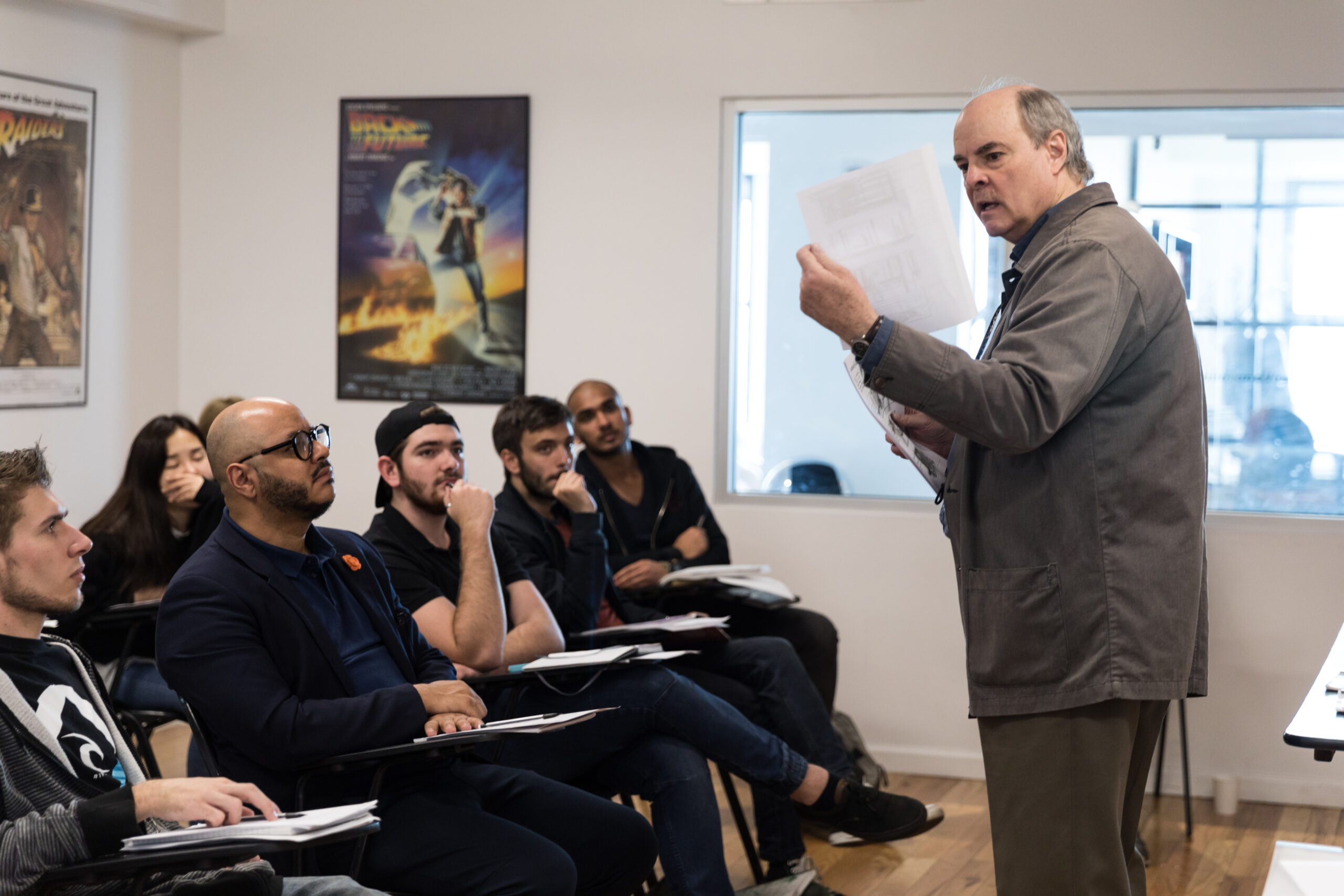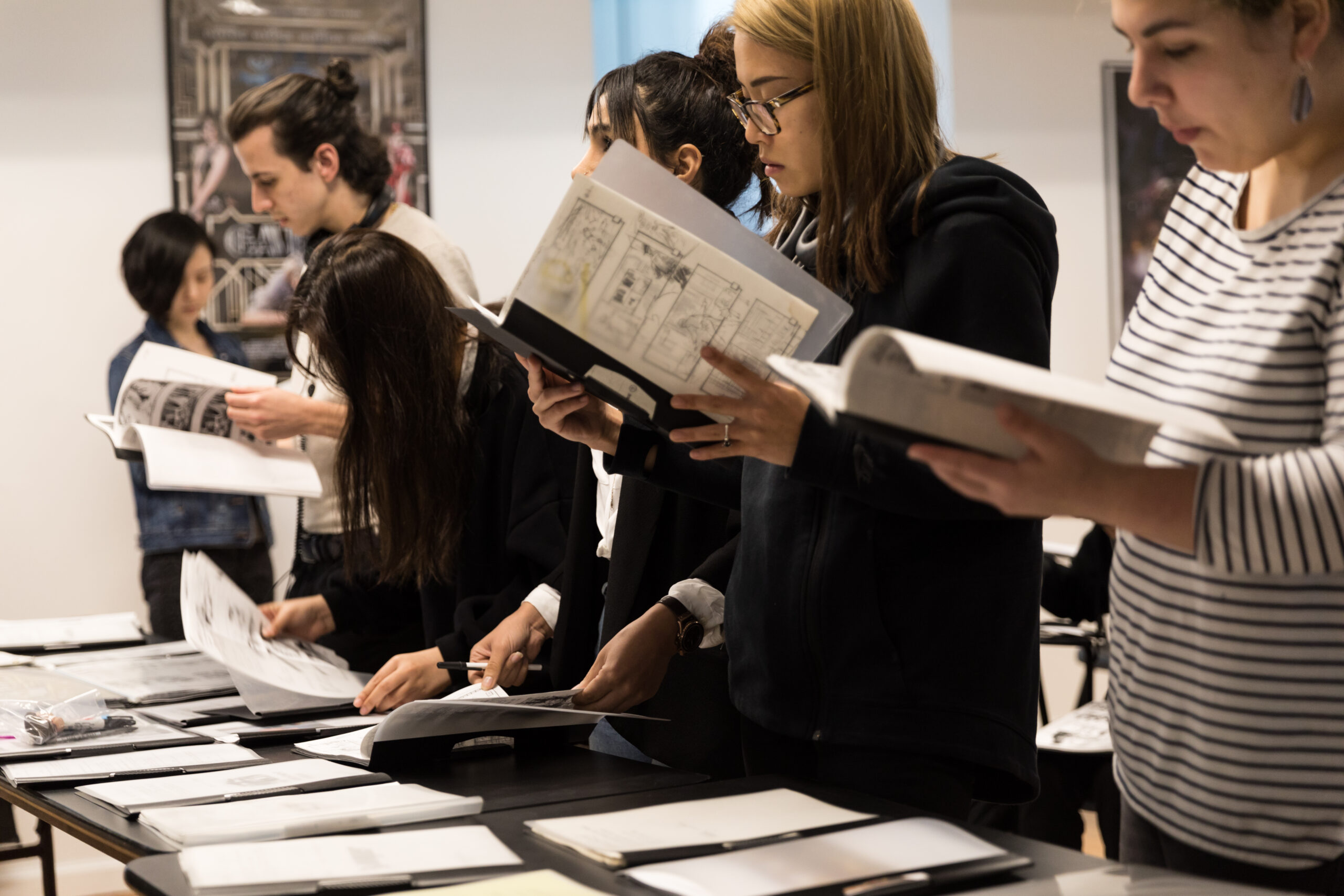Last week, the New York Film Academy Filmmaking students were given an in-depth lecture on storyboarding from one of the best, John F. Davis. As a Storyboard Artist and Illustrator for over 70 major motion pictures, Davis has designed camera shots and scenes for directors such as Sydney Pollack, Martin Scorsese, Sam Mendes, Robert De Niro, Baz Luhrmann, Lasse Hallstrom, Jonathan Demme, M. Night Shyamalan and Barry Sonnenfeld, among many others, with an initial collaboration in 1983 with Jim Henson and Frank Oz. In 2005, Davis won the Best In Show Award for the Society of Illustrators’ first “The Art of the Storyboard” exhibition, an international competition with over 300 entries worldwide.

Since coming to New York City in 1979 from the Yale School of Drama, he has been a Production Designer, Visual Consultant, Storyboard Artist and Illustrator. Davis won two Emmy Awards in 1988 for designing the broadcast sets for the Summer Games of the XXIV Olympiad in Seoul for NBC Sports; he has also been a political media consultant on presidential, senatorial and gubernatorial campaigns and in 1993 produced and directed a 3-hour nightly literacy show for the State of Mississippi (where he is from originally). In 1982, he designed all the News and Sports sets for ABC and has designed two independent films as well as creating concepts, storyboards and set designs for numerous music videos, industrials, and television commercials since the mid-80s.
Davis began the lecture by allowing the students to check out his original storyboards from several major films including “The Departed,” “Black Swan,” “Zoolander,” and many others. The focus of the lecture was “awareness.”

“There’s an awareness factor that needs to be in storytelling,” he said. “To engage the audience in a way that they’re surprised and taken by it.”
He also stressed the fact that research is imperative. “If you do the right research it’ll inform your project,” he said.
While Davis did admit that drawing is the foundation of the visual arts, he did say that a filmmaker doesn’t necessarily have to be great a drawing in order to create a storyboard. Davis broke down the drawing process, allowing students to understand how to properly draw and interpret a scene from page to visual.
The process of storyboarding is extremely beneficial when it comes time for a director to set up his shots. Davis’ lecture brought about a true appreciation for storyboard art and the man or woman who provides the art for each of our favorite films.
